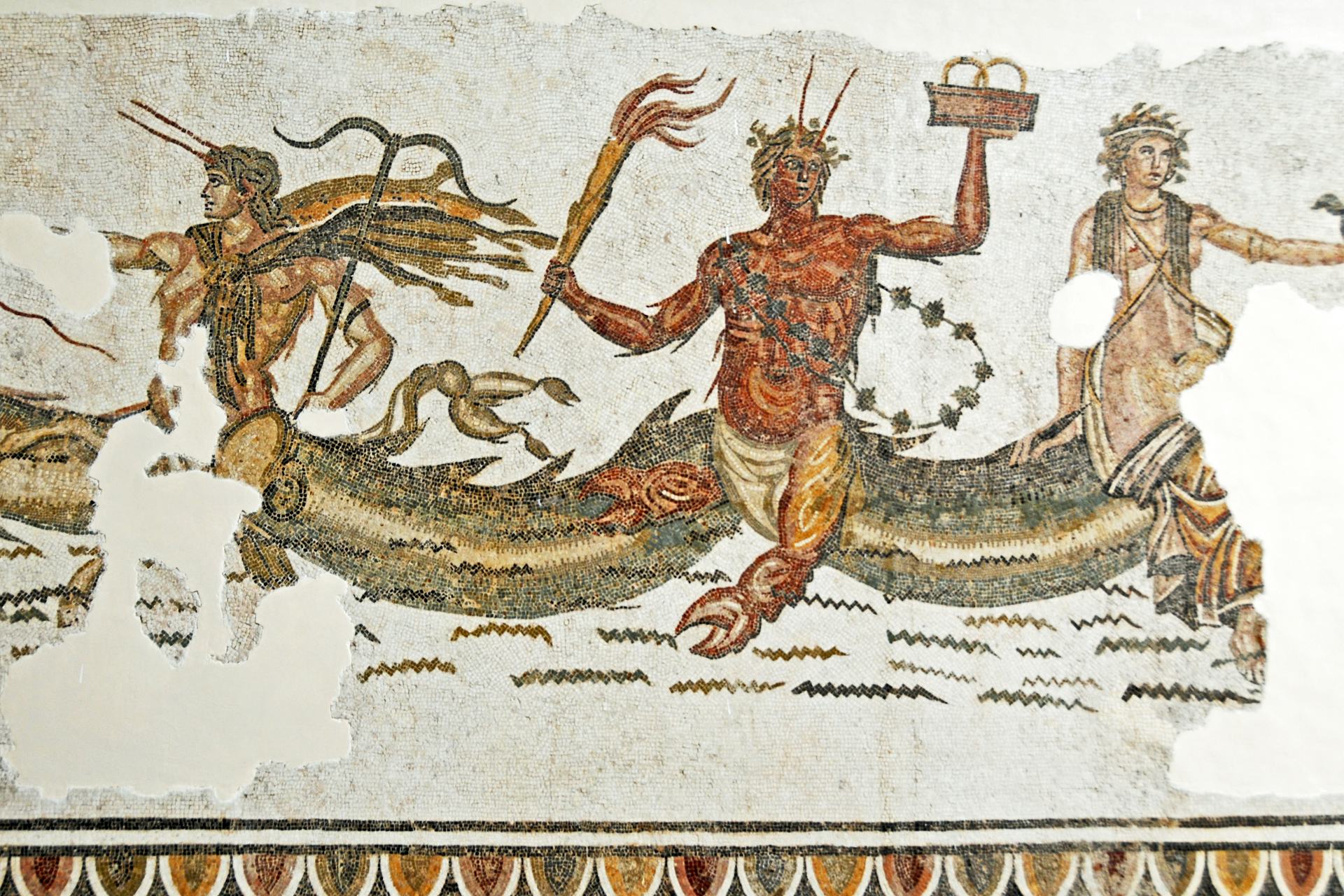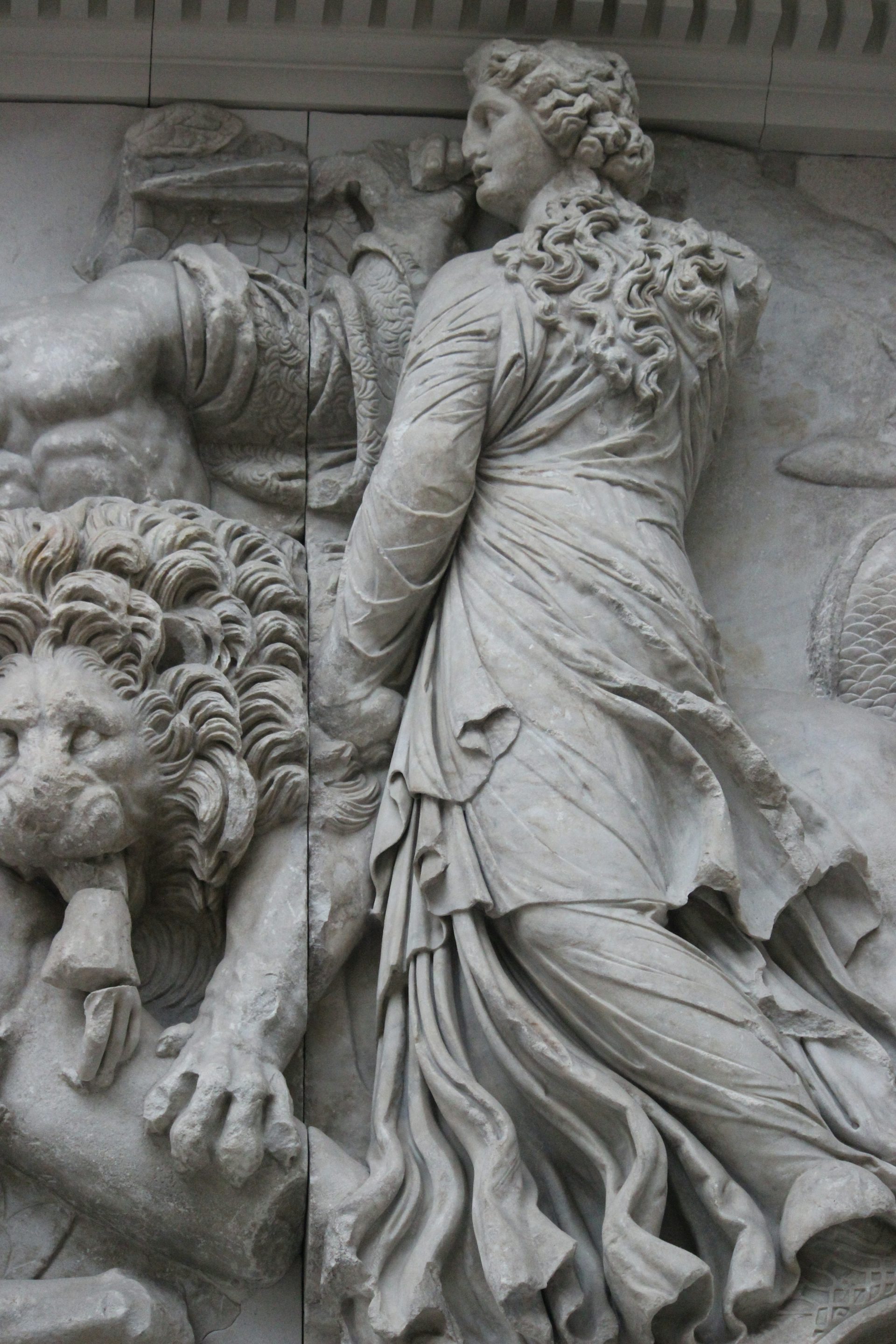Ceto

Roman mosaic from Trajan’s Baths of Acholla, perhaps showing Phorcys (center), Ceto (right), and Triton or Thaumas (left)
Bardo National Museum, Tunis / Dennis JarvisCC BY-SA 2.0Etymology
The name “Ceto” (Greek Κητώ, translit. Kētṓ) is likely connected to the Greek word κῆτος (kêtos), meaning “sea monster.” However, the origins of this word are obscure (and perhaps even pre-Greek).[1]
Pronunciation
English
Greek
Ceto Κητώ (Kētṓ) Phonetic
IPA
[KEE-toh] /ˈki toʊ/
Attributes
Despite her association with terrifying monsters, Ceto’s defining attribute was her beauty. The poet Hesiod described her as “fair-cheeked.”[2] Likewise, in the only definitive depiction of Ceto from ancient art—on the frieze of the Pergamon Altar (180/160 BCE)—she cuts a stately figure, with attractive features and an ornate hairstyle.[3]

Detail from the Pergamon Altar (ca. 180/160 BCE) showing Ceto fighting against the Giants
Pergamon Museum, Berlin / Miguel Hermoso CuestaCC BY-SA 4.0Family
Ceto was the daughter of Gaia, the primordial embodiment of the earth, and Pontus, the embodiment of the sea. Her siblings were the sea deities Phorcys, Nereus, Thaumas, and Eurybia.[4]
Ceto married her brother Phorcys. Their children—collectively known as the “Phorcides” (after their father)—were some of the most dreaded monsters of Greek mythology. Among these offspring were the eternally gray Graeae, the stony Gorgons, the snake monster Echidna, and the gigantic serpent who guarded the Garden of the Hesperides (sometimes called Ladon, but other times unnamed).[5]
In a later tradition, Ceto was also said to be the mother of the Hesperides.[6]
Worship
Our only evidence for an ancient cult of Ceto is a vague reference made by the Roman writer Pliny the Elder: he mentioned a “famous Ceto” worshipped in the Near Eastern city of Joppa (modern-day Jaffa, Israel).[7]